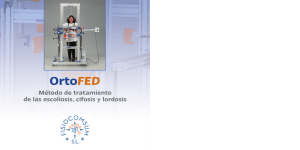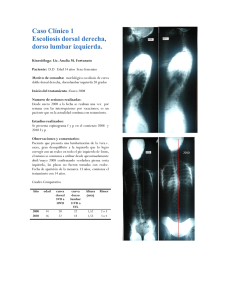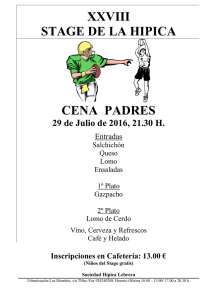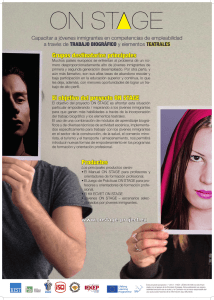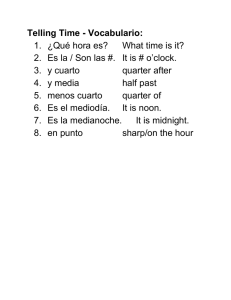PARÁMETROS CLÍNICOS PARÁMETROS RADIOGRÁFICOS
Anuncio
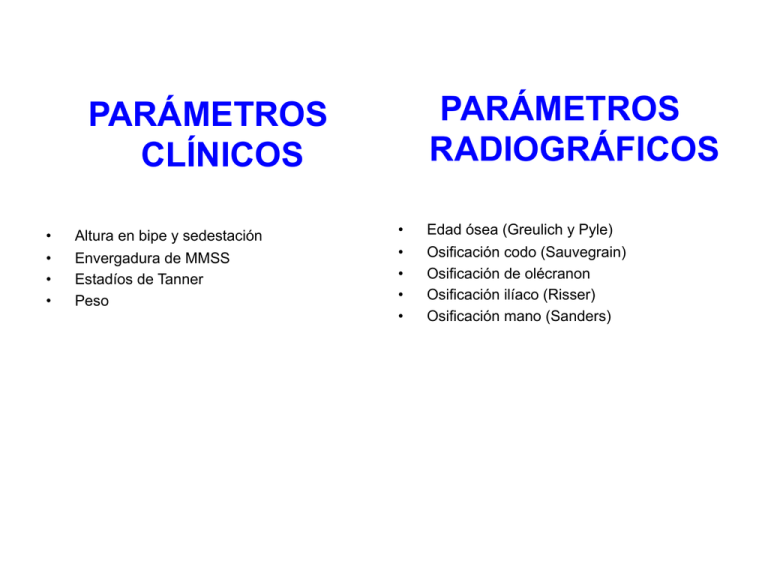
PARÁMETROS RADIOGRÁFICOS PARÁMETROS CLÍNICOS • • • • Altura en bipe y sedestación Envergadura de MMSS Estadíos de Tanner Peso • • • • • Edad ósea (Greulich y Pyle) Osificación codo (Sauvegrain) Osificación de olécranon Osificación ilíaco (Risser) Osificación mano (Sanders) • PGV/PHV: 12 m antes de menarquia y Risser 1 – Dura 2 a – H: 11 – 13 a – M: 13 – 15 a Relationship of peak height velocity to other maturity indicators in idiopathic scoliosis in girls - JBJS 2000 Parámetros clínicos: ALTURA • • > 0,5cm / mes > 6-7 cm / año Al comienzo de la pubertad, el crecimiento restante: en niños 22,5cm en niñas 20,5cm Peak height velocity 2739 HISTORIA NATURAL THE JOURNAL OF BONE & JOINT SURGERY JBJS.ORG V O L U M E 89-A N U M B E R 12 D E C E M B E R 2 007 d d d SKELETAL AGE ASSESSMENT FROM THE OLECRANON FOR IDIOPATHIC SCOLIOSIS AT RISSER GRADE 0 Test de Risser Fig. 1 Simplified skeletal age assessment with the olecranon method during the accelerating pubertal growth phase of peak height velocity and Risser grade 0 from the ages of eleven to thirteen years in girls and from thirteen to fifteen years in boys, with a decelerating growth phase after elbow fusion. Y cartilage closure = triradiate cartilage closure. ! ! In order to compare this simplified method of skeletal ! teroanterior radiographs of the spine made when the patient ! ! Parámetros radiográficos: SANDERS Sanders classification of skeletal maturity. Stage 1, juvenile slow; stage 2, preadolescent (Tanner 2); stage 3, adolescent rapid-early (Tanner 2-3, Risser 0); stage 4: adolescent rapidlate (Tanner 3, Risser 0); stage 5, adolescent steady early (Risser 0); stage 6, adolescent steady-late (Risser > 0); stage 7, early mature. FASE DE ACELERACIÓN Curva Riesgo de progresión 5º 10% 10º 20% 20º 30% 30º 100% REGLA DE ORO La historia natural de una curva escoliótica debe ser evaluada sobretodo en la fase de acelaración de la pubertad (2años). - Aumento 1º cada mes (12º/año) (curva progresiva que requiere tratamiento) - Aumento 0,5º / mes (observación cuidadosa) - Aumento menor de 0,5º / mes (curva de progresión leve) Evolución de la escoliosis Porcentaje de curvas en progresión Estadio de Risser Curvas 5 -19º Curvas 20 – 29º 0, 1 22% 68% 2, 3, 4 1,6% 23% Tratamiento: Corsé. • Detener o enlentecer. Nunca revertir. • Indicaciones (Scoliosis Research Society): – – – – Curvas con presentación > 30º con Risser <2. Progresión documentada > 25º. Curvas con presentación entre 20 -25º en niños muy inmaduros. Risser 0. • 23h/día Tratamiento: Corsé. Corsé de Milwaukee Cervico-torácico-lumbosacra Curvas con vértebra ápex en o por encima de T7. Corsé de Boston (OTLS) Toraco-lumbo-sacra Curvas con vértebra ápex por debajo de T8. Corsé Nocturno de Charleston Corrección nocturna • Sensores de calor • Número de horas-progresión • Efecto más significativo en pacientes con Risser 0 ó 1 al inicio del tratamiento • No progresaron en pacientes que lo usaban > 12 h • 70% progresaron en los que se usaba <7h increases, bracing is resumed or a spinal fusion is performed. If, with weaning, the curve increases, bracing remains at full time, this full time wear continuing till the growth spurt. If the curve increases at any time, surgery is indicated. Depending on the age of the child at the time of curve increase, the surgery is either instrumentation without fusion, or a definitive fusion, usually an anterior and posterior approach. In some cases control of the curve continues through the growth spurt till the end of growth, when weaning is instituted. Bracing Course Full Time Wear Curve Control Part Time Wear Curve Controlled Curve Increases Part Time Full Time Wear OOB Puberty Curve Controlled OOB Curve Controlled Full Time Orthosis Curve Increases Resume Orthosis Surgery 2 Curve Increases Instrumentation w/o fusion Spinal Fusion MAGNITUD de la CURVA RISSER 0 o premenarquial RISSER 1-2 RISSER 3-5 <25 Observación Observación Observación 30-40 Corsé (>25º) Corsé Observación >40 Cirugía Cirugía Cirugía (>50º) Algoritmo de tratamiento Si 11 – 25º ¿Madurez esquelética? No Paciente derivado a Especialista Si 25 - 45º Seguimiento cada 6 meses hasta madurez esquelética Seguimiento anual ¿Madurez esquelética? No >40 - 45º Seguimiento anual Ortesis con seguimientos cada 4-6 meses Considerar Cirugía RESUMEN n Puede ser grave si ocurre en la niñez n No existe tratamiento médico n La artrodesis es un tratamiento an?funcional e irreversible n Hay soluciones Qx para todo ?po de deformidades
